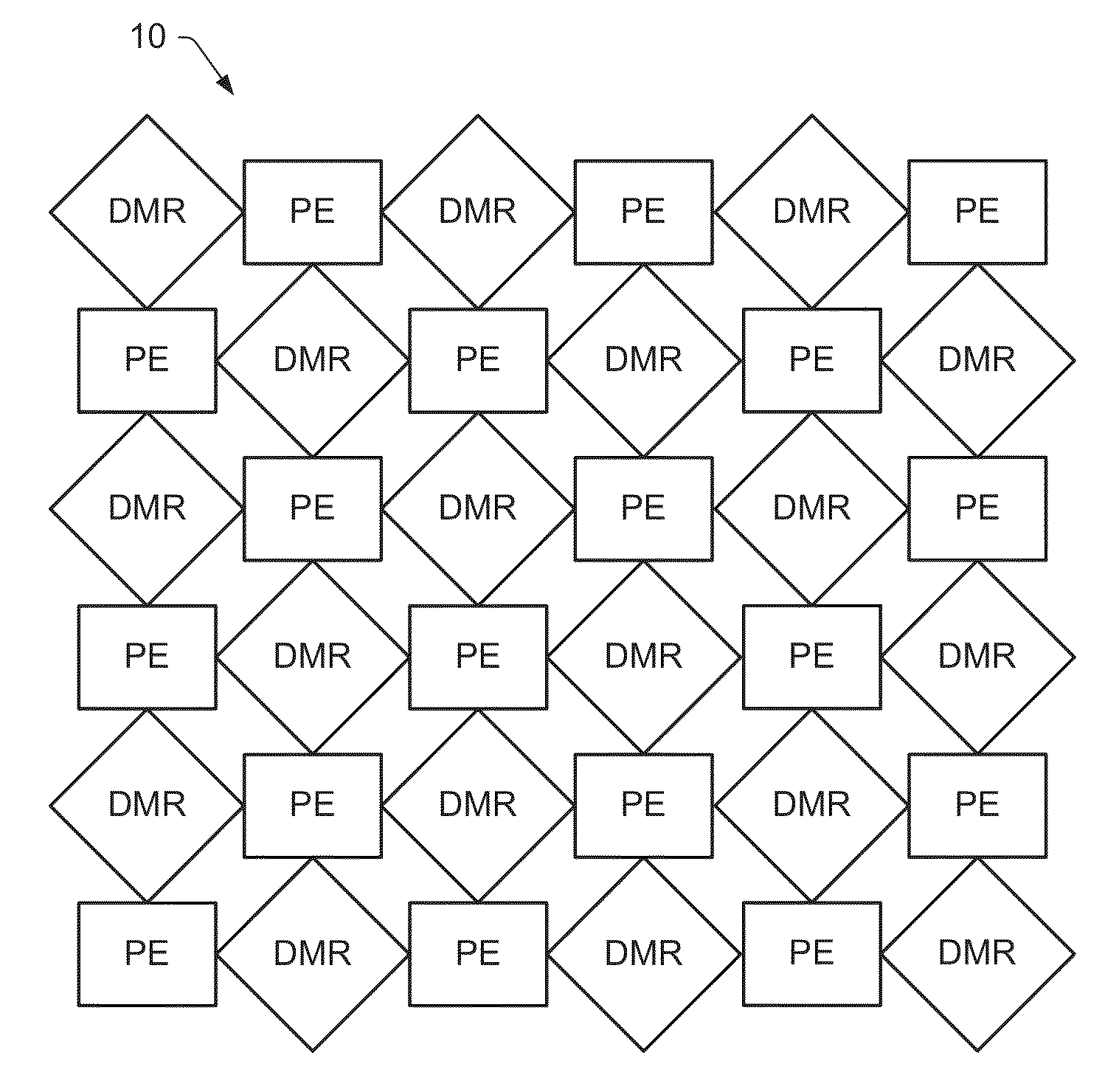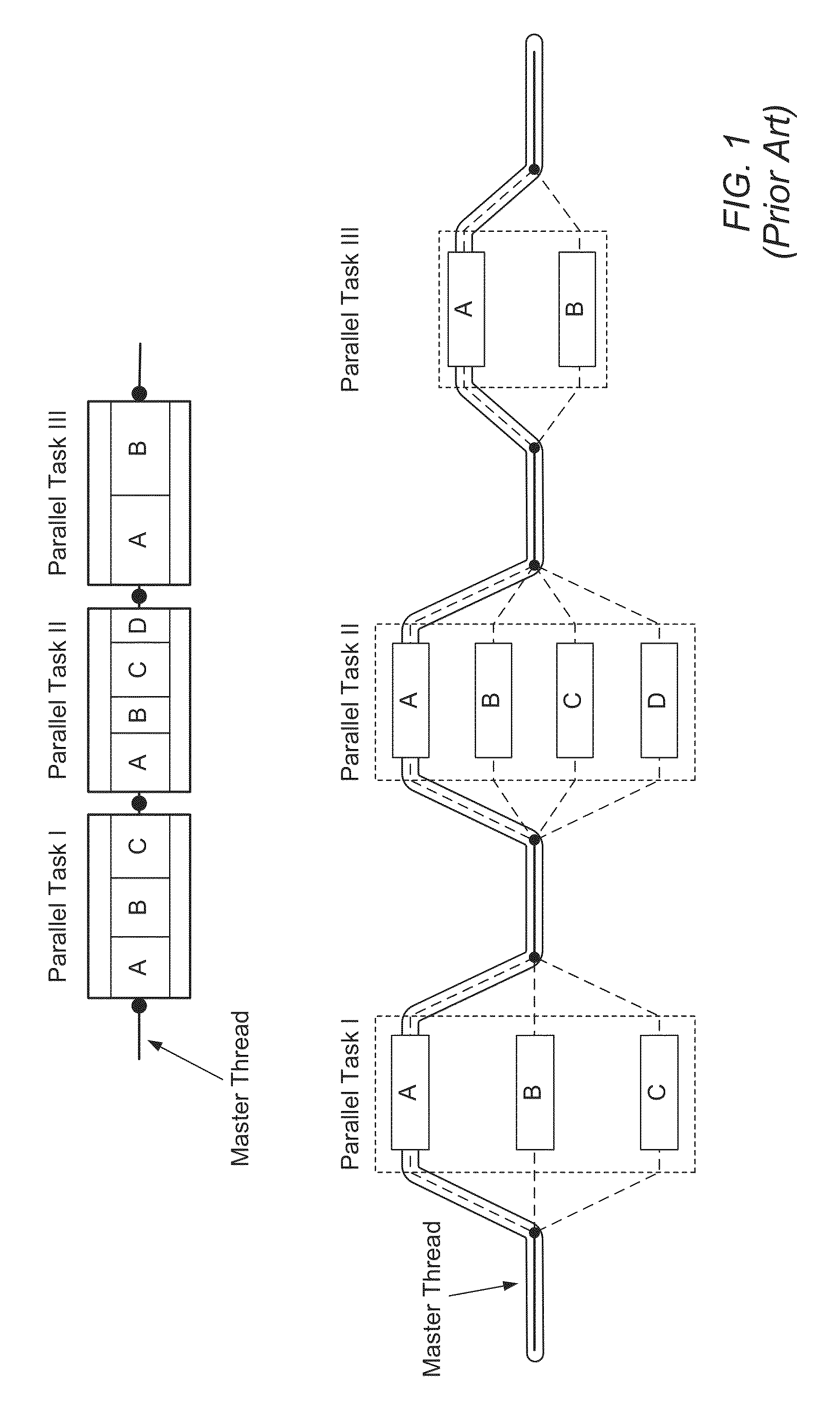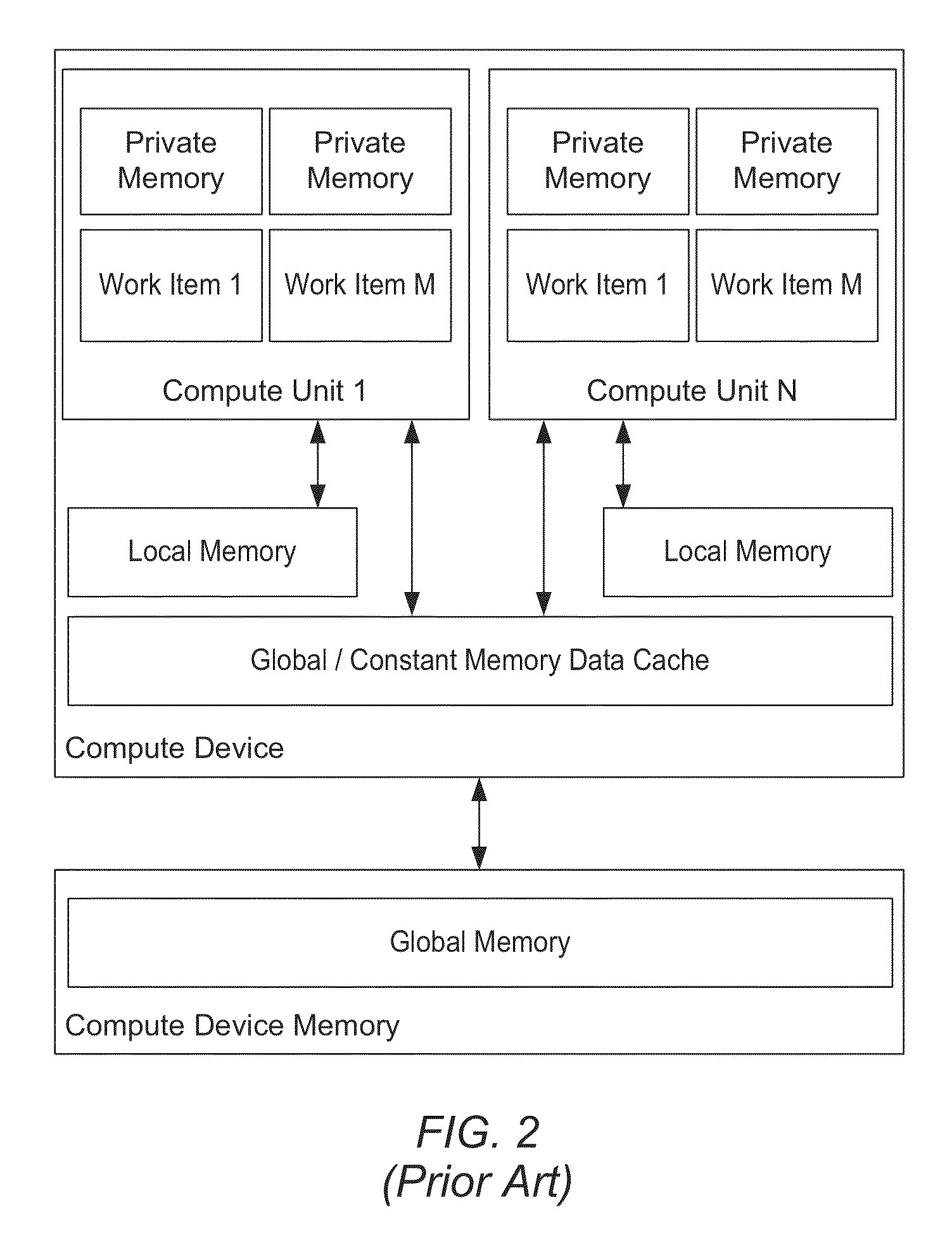Memory-network processor with programmable optimizations
a network processor and memory technology, applied in the field of multiprocessor systems, can solve the problems of large area requirement on a single chip die, large power dissipation, energy consumption, etc., and achieve the effect of efficient execution
- Summary
- Abstract
- Description
- Claims
- Application Information
AI Technical Summary
Benefits of technology
Problems solved by technology
Method used
Image
Examples
Embodiment Construction
Incorporation by Reference
[0084]U.S. Pat. No. 7,415,594 titled “Processing System With Interspersed Stall Propagating Processors And Communication Elements” whose inventors are Michael B. Doerr, William H. Hallidy, David A. Gibson, and Craig M. Chase is hereby incorporated by reference in its entirety as though fully and completely set forth herein.
Terms
[0085]Computer System—The term “computer system” refers to any of various types of computing or processing systems, including a personal computer system (PC), mainframe computer system, workstation, network appliance, internet appliance, personal digital assistant (PDA), grid computing system, or other device or combinations of devices. In general, the term “computer system” can be broadly defined to encompass any device (or combination of devices) having at least one processor that executes instructions from a memory medium.
[0086]Software Application—The term “software application” (also referred to herein as just an “application”) ...
PUM
 Login to View More
Login to View More Abstract
Description
Claims
Application Information
 Login to View More
Login to View More - R&D
- Intellectual Property
- Life Sciences
- Materials
- Tech Scout
- Unparalleled Data Quality
- Higher Quality Content
- 60% Fewer Hallucinations
Browse by: Latest US Patents, China's latest patents, Technical Efficacy Thesaurus, Application Domain, Technology Topic, Popular Technical Reports.
© 2025 PatSnap. All rights reserved.Legal|Privacy policy|Modern Slavery Act Transparency Statement|Sitemap|About US| Contact US: help@patsnap.com



